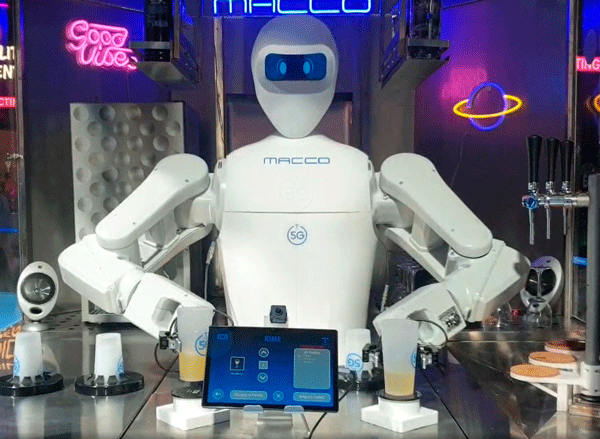Training, on-demand wages and technology help the caterer to alleviate an increasingly serious problem: the shortage of staff. Is there anything else that can be done?
By Marta Renovales, a journalist with Profesionalhoreca.com
One more year, the summer began with the recurring news of the staff shortage in the restaurant and catering industry, which has even forced the closure of establishments or limitations of schedules. And it concluded with the study of the Bank of Spain that the industry has triggered prices above inflation, in the midst of a general rise in costs.
Restaurant owners and caterers, logically, defend themselves: according to restaurant and catering business owners, this report is based on the transfer of product prices, but takes very little account of wage costs and costs of other services, including financial or energy costs. Specifically, labour costs in the restaurant and catering trade have soared by 12.6%, which makes it the industry with the highest percentage increases.
As far as staffing is concerned, sad to say, we have hit a wall: finding, attracting, and retaining talent is increasingly hard, both in accommodation and in the restaurant trade, which has forced many hoteliers and restaurant owners to re jig timetables, to fall back on foreign workers and/or unqualified staff, or simply not to open. And yet paradoxically, all this in a summer that has beaten records for the industry.
The truth is that for young people, hospitality is not perceived as a solid professional option in the long term, given the working conditions and the lack of balance between work and personal life that it offers.

Train to retain
In this situation, training is today more than ever a critical factor, both to improve the quality of service and satisfy the customer, and to increase the motivation and productivity of the key asset of any hospitality business: the staff.
Always at the cutting edge, organised restaurant and catering already uses microlearning platforms, a perfect solution to train and “engage” staff: with a few minutes a day and on the employee’s mobile, employers can train and involve their teams and offer a good customer experience.
“Taking care of the staff is the basis to keep them engaged and provide customers with an unforgettable experience,” explains Christian Erquicia Country Director for MobieTrain Spain. “Training forms part of this care, it is a key element, as it helps employees give their best, develop their abilities and feel they are part of the team. Therefore, entrepreneurs should not see it as a cost, but as an investment that will have a real impact on their results.”
This type of platform especially attracts young people, digital natives accustomed to accessing information when they want, so hoteliers have to design their onboarding and training program to suit them, and preferably on a digital platform, using techniques such as gamification and using short and interactive modules.
Pay me now, please
And how about advancing the salary, known as ‘on-demand salary‘? It is a solution that allows employees to collect at any time the fraction of their wages that has already been earned, which contributes to significantly reducing staff turnover in an industry such as hospitality and catering, in which there are many temporary workers or those who work by the hour, for whom having liquidity is key.
In the fast-food trade, Taco Bell was a pioneer in 2021 by implementing the Hastee application to access early wages. Workers greatly value being able to collect their wages whenever they want, and, above all, the fact that they own the money they have already earned throughout the month, without having to wait for payday.
Today, Hastee is integrated into Mapal Workforce application, which is used in Spain by more than 100,000 employees. It’s one of many engagement tools that help foster a positive company culture, monitor the employee experience, and build talent loyalty. “The financial well-being of the team is a fundamental factor to be able to provide an excellent service”, Mapal point out.
And not only chains: restaurant groups such as La Musa, La Ancha and Lamucca have implemented on-demand salary, in this case with the Payflow, which helps reduce staff turnover in restaurants and bars by 20% on average, in addition to helping attract new staff.
Robotics: the digital revolution that is here now
But beyond training and encouraging workers, the progressive increase in labour costs will force the use of robotics and the automation of internal processes.
In fact, robots in the dining room, kitchen or customer service have already arrived in the hospitality industry to perform the heaviest or monotonous workloads, and help (not replace, mind) waiters. The robot waiters of companies such as Pudu Robotics, Macco Robotics or Keenon Robotics, among others, are there to provide support in the dining room; they navigate the room with precision avoiding obstacles, and adapt tirelessly to complex environments.

Also, Spanish firms such as Dax Robotics or BRobot5 offer the hospitality and catering industry robot waiters, brewers, bartenders and robots that make paellas and potato omelettes.
Innovation, in any case, is proceeding at breakneck pace in the industry: Botbar Coffee, for example, has set up the first 100% automated coffee shop in New York, controlled by a robot with two robotic arms that operates as a barista, and also dances and greets customers.
The robotics revolution has started in the living room, but it has already reached the kitchen, where it can efficiently automate processes. In the kitchen, robots can now measure and weigh ingredients, cut, chop, mix, beat, cook, fry, pack, wash up, etc.
The firm Hyper Robotics was the pioneer in creating fully automated restaurants, opening up unlimited possibilities to fast food. From there, innovations follow one another continuously: the firm that specialises in robotic kitchens Bowlton, for example, has launched a robot that cooks soups, salads and hot dishes at a rate of 300 dishes per hour. Meanwhile Pizzabot, from Lab2Fab makes pizzas of uniform quality with the minimum waste of ingredients, something that is also achieved by Remy, the salad robot from Cibotica, which produces up to 300 bowls per hour.
In the kitchen, the combination of automation and Artificial Intelligence (AI) is helping not only to execute tedious or expensive processes, but also to achieve applications that help chefs make recipes more sustainable, healthy and tastier. The change has only just begun.
An interesting success story is the startup Remy Robotics, which has developed in Barcelona a robotic kitchen powered by artificial intelligence, where robots prepare healthy and seasonal dishes under the OMG banner. This robotic kitchen is based on algorithmic cooking with machine-to-machine communication between smart ovens, refrigerators and robotic arms, which are able to cook food 40% faster than delivery restaurants.

The result is food “designed by humans and cooked by robots,” their spokespersons explain. “We don’t want to replace chefs, but to make their lives easier, providing them with better working conditions. The robots perform repetitive tasks throughout the day so cooks can work 9-to-5 at a stress-free pace.”
In their opinion, the food delivery business is the best place to start this robotic revolution, “since we can improve the quality of life of kitchen staff, as well as the quality of food and the overall delivery experience.”
It should not be forgotten, moreover, that one of the aspects in which the most progress is being made in robotics for hospitality is the use of robots as autonomous delivery vehicles. This is precisely the speciality of the Spanish startup Goggo Network, which several months ago announced its collaboration with Domino’s Pizza to deliver orders with autonomous robots in Alcobendas, looking for a more sustainable and efficient home delivery.
After its agreement with the American Ottonomy, Goggo Network will be able to make last-mile deliveries in Spain and Europe with robots with greater load capacity (up to 100 kg per shipment), which will allow it to serve wholesalers and large retailers, as well as restaurants and retailers.
What about the independent Spanish restaurant and catering trade? It is no stranger to the robotics phenomenon; far from it. Just a year ago, the bar restaurant of the Family Sport Center in Beniparrel (Valencia) claimed to be the first automated restaurant in Spain: diners order and pay by mobile, and receive their order from a robot. And the rural hotel El Curro, in the heart of the Sierra de Cazorla, has been a pioneer in the Andalusian hotel industry by incorporating a robot waiter that attends tables, takes orders and supports the dining room staff; both robots have been developed by Dax Robotics.
Robots in hotels
The fact is that automation, together with the use of artificial intelligence, improves the customer experience … and that of employees. The hotel industry will be one of the segments to benefit most in the implementation of robotics and AI-based solutions, from chatbots and digital twins to robots that perform service, reception, cleaning or kitchen tasks.
Wiongo has been the first company in Spain and among the top three in Europe, to integrate robots in the accommodation sector. “Robotics is the next link in the chain,” says this company, which is installing room service and cleaning robots in Spanish hotels, with an extraordinary reception by both customers and hotel staff, who see how the robot frees them from a lot of workload. And let’s not forget that happy employees offer the best customer service.
For example, a cleaning robot is able to recognise the entire premises and go to any location, from any floor of the establishment, taking the lift and opening all the doors in its path, and perform cleaning and disinfection tasks in a 100% automated and efficient way.
All this may seem distant and even science fiction for the hundreds of thousands of small catering establishments that with greater or lesser fortune are weathering the storm in our country and struggling against all kinds of adversity. But the staff shortage is nothing new, although it is increasingly serious.
Obviously many hoteliers cannot resort today to having a robot, to give training or to pay the salary to their workers when they need it, but they can do something infinitely more valuable: scrupulously comply with the labour agreements of the industry and guarantee the conditions established by law. Only in this way will hospitality be a much more attractive industry.


